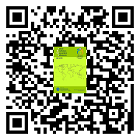BEBERAPA FAKTOR YANG BERHUBUNGAN DENGAN KEJADIAN KECACINGAN PADA ANAK USIA 1-4 TAHUN
(1)
(2)
(3)
(*) Corresponding Author
Abstract
ABSTRACT
Background. STH infestation is influenced by direct contact with contaminated soil so that the potential for worm eggs swallowed. Factor of personal hygiene, environmental sanitation and the treatment is closely related to worm infestation,
Objective. To identify any risk factors associated with worm infestation in children aged 1 -4 years in Karangroto villages.
Methods. The survey research was conducted with a cross sectional approach. The Population of research are babies with aging between 1-4 years in may 2010 worms do not take medication during the last six months with atotal nimber of 54 respondents. The sampling technique adopted in this research was the propotional stratified random sampling. The independent variable is the habit of washing hands, wearing custom footwear, cleaning fingernails , habits play ground, kepemilikkan toilets, floors, water supply, while the dependent variable is worm infestation. Data obtained through interviews and observation. Worm infestation confirmed by laboratory tests. Data were analyzed using Chi-square test.
Results. Two subjects (3.7%) used to wash hands. (98.1%) used to wear footwear, (11.1) has clean nails, (98.1%) used to playing on the ground, (94.4%) had their own latrine, (87%) subjects have an impermeable floor water (100%) subjects had clean water availability, the prevalence of worm infestation (14.8%).
Conclusion. The habit of washing hands, wearing footwear habits, cleanliness of nails, playing habits on the ground, kepemilikkan toilets, floors, and clean water availability was not associated with worm infestation.
Keywords. Translation wash hands, footwear, cleaning fingernails.
ABSTRAK
Latar Belakang: Infestasi STH dipengaruhi oleh kontak langsung dengan tanah yang terkontaminasi telur cacing sehingga berpotensi untuk tertelan. Faktor higiene perorangan, sanitasi lingkungan dan pengobatan erat kaitannya dengan kecacingan.
Tujuan: Mengetahui faktor risiko apa saja yang berhubungan dengan infestasi cacing pada anak usia 1-4 tahun di kelurahan karangroto.
Metode: penelitian survei ini dilakukan dengan pendekatan cross sectional. Populasi penelitian ini adalah seluruh anak di Kelurahan karangroto yang sampai bulan mei 2010 berusia 1-4 tahun tidak minum obat cacing selama 6 bulan terakhir yang berjumlah 54 responden. Tehnik pengambilan sampel menggunakan tehnik proportional stratified random sampling. Variabel bebas adalah kebiasaan mencuci tangan, kebiasaan memakai alas kaki, kebersiha kuku, kebiasaan bermain ditanah, kepemilikkan jamban, lantai rumah, ketersediaan air bersih sedangkan variabel terikat adalah infestasi cacing. Data diperoleh melalui wawancara dan observasi. Infestasi cacing dibuktikan dengan uji laboratorium. Data dianalisis menggunakan Chi-square.
Hasil: Dua subjek (3,7%) terbiasa mencuci tangan. (98,1%) terbiasa memakai alas kaki,
(11,1) memiliki kuku bersih, (98,1%) terbiasa bermain ditanah, (94,4%) mempunyai jamban sendiri, (87%) subjek mempunyai lantai rumah yang kedap air, (100%) subjek memiliki ketersediaan air bersih, prevalensi kecacingan (14,8%).
Kesimpulan: kebiasaan mencuci tangan, kebiasaan memakai alas kaki, kebersihan kuku, kebiasaan bermain ditanah, kepemilikkan jamban, lantai rumah, dan ketersediaan air bersih tidak berhubungan dengan infestasi cacing.
Kata Kunci: Kecacingan, cuci tangan, alas kaki, kebersihan kuku.
Full Text:
PDFArticle Metrics
Abstract view : 310 timesPDF - 558 times
DOI: https://doi.org/10.26714/jkmi.7.1.2011.%25p
Refbacks
- There are currently no refbacks.
Copyright (c) 2017 Jurnal Kesehatan Masyarakat Indonesia

This work is licensed under a Creative Commons Attribution-NonCommercial-NoDerivatives 4.0 International License.
------------------------------------------------------------------------------------------------------------------------------------------------------------------------------------
 | Jurnal Kesehatan Masyarakat Indonesia ISSN 1693-3443 (print) | 2613-9219 (online) |
Jurnal Kesehatan Masyarakat Indonesia is licensed under a Creative Commons Attribution-NonCommercial-NoDerivatives 4.0 International License.












